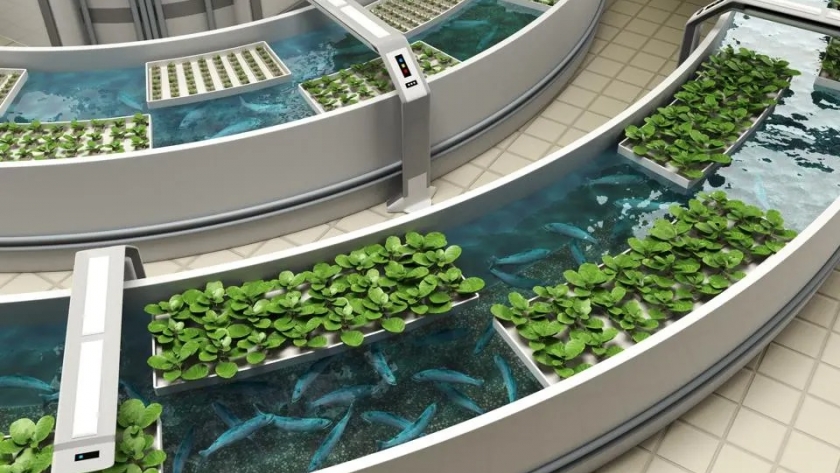
By Agroempresario.com
Aquaponics is an innovative agricultural method that harmoniously blends aquaculture, the practice of raising fish, with hydroponics, the cultivation of plants in water without soil. This system creates a mutually beneficial environment where fish and plants support each other's growth, offering a sustainable and efficient approach to food production. In aquaponics, fish such as tilapia, catfish, and trout are raised in tanks, where they produce waste rich in ammonia. This waste is not just a byproduct but a valuable resource, as it is converted by beneficial bacteria into nitrites and then into nitrates, a form of nitrogen that plants thrive on.
The heart of aquaponics lies in its closed-loop system, where the nutrient-rich water from the fish tanks circulates to plant beds. The plants absorb the nutrients, effectively cleaning the water before it returns to the fish tanks. This process not only provides a natural fertilizer for the plants but also ensures a clean and healthy environment for the fish. The result is a system that uses significantly less water than traditional agriculture, making it particularly valuable in areas facing water scarcity. Moreover, aquaponics systems can be set up in a variety of environments, including urban areas, making them accessible to a wide range of growers.

One of the most appealing aspects of aquaponics is its potential for dual income streams. The system allows for the simultaneous production of fish and plants, offering a diverse range of products from a single operation. This diversification can lead to increased revenue and market resilience. Additionally, the use of natural fish waste as fertilizer eliminates the need for chemical fertilizers, reducing both costs and environmental impact. The sustainable nature of aquaponics also extends to its role in reducing overfishing by providing an alternative source of fish, further contributing to environmental conservation.

While the benefits of aquaponics are numerous, there are considerations for those looking to adopt this system. The initial setup can require a significant investment in infrastructure, such as tanks, pumps, and grow beds. However, these costs are often offset by the long-term savings on water and fertilizer. Another critical factor is the need for knowledge and skill in both aquaculture and horticulture, as well as the technical aspects of managing the system. Choosing the right species of fish and plants is also crucial, as compatibility and market demand can significantly impact the success of the operation.
Aquaponics represents a forward-thinking approach to agriculture, offering a sustainable, efficient, and economically viable solution to food production. By merging the best practices of fish breeding and agriculture, this method not only conserves resources but also provides a model for future farming practices in an increasingly resource-conscious world.
